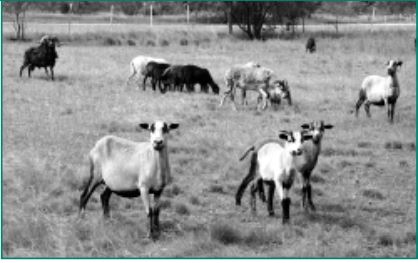Rural areas in Texas are being rapidly developed and urbanized. Many urban dwellers want to escape to the country to live a quiet, peaceful life or enjoy recreational opportunities on their own land. As a result, large tracts in rural areas are being divided into properties of 5 to 100 acres; many are fewer than 20 acres. New rural landowners almost always want to maintain or obtain an ad valorem tax exemption, which is most often granted for agricultural use of the land.
They often decide to start livestock enterprises to meet tax exemption requirements. However, most taxing authorities require one to demonstrate that such an enterprise is economically viable. In other words, owning one animal as a family pet will not qualify property for the tax exemption.
An ideal enterprise for small acreages requires:
- minimal facilities (both in construction, expense and space required);
- minimal labor (both time and physical effort); and
- minimal animal husbandry expertise.
They also have readily accessible markets for excess production or unwanted animals.
The most important concern of any landowner, big or small, is good stewardship of the land. The three livestock enterprises discussed here are the most environmentally compatible with small acreages.

Livestock enterprises almost always depend, at least to some degree, on having forage for the animals to eat. As a livestock producer, forage is your primary product. No livestock enterprise can be economically viable for long if grazing destroys the forage growing on the land.
Because livestock enterprises depend upon forage, the most critical decision you may make is the appropriate stocking rate for your land. Stocking rate is the number of animals per unit area of land. It is typically expressed as acres per animal unit. An animal unit consumes 26 pounds of forage daily.
For an example, one 80-pound ewe of a hair sheep breed equals 0.12 animal unit equivalent. So, eight ewes are one animal unit (meaning that eight ewes consume about 26 pounds of forage daily). If you own 20 acres, but only 10 acres produce forage for grazing, you would need to determine how many pounds of forage those 10 acres were producing to know how many ewes you could graze on the land.
Small acreage landowners usually overestimate the carrying capacity (sustainable stocking rate) of their property. Landowners who graze too many animals for a long period of time will destroy the productivity of their land.
Overgrazing has these consequences:
- Desirable, nutritious plants disappear and undesirable plants multiply, so animals do not perform well without costly supplemental feed.
- With the loss of native range plants, rainfall can not percolate into the ground easily and tends to run off. Run-off causes soil erosion and pollutes surface water. The regeneration of just 1 inch of topsoil will require several lifetimes.
Each property is unique, with different soil types, topography and plants. Therefore, general recommendations for appropriate stocking rates or carrying capacities are not included here.
You will need help to determine your stocking rate accurately. Contact your county Extension agent or a representative of the Natural Resource Conservation Service. These professionals have guides to the forage production capacity of every county in Texas, and can help you determine the amount of forage your land is likely to produce. They will advise you about the number of acres of your land that will be required to support an animal unit with minimal supplemental feed.
– Submitted by Mario Villarino, Hopkins County AgriLife Extension Agent, Ag./Natural Resources. Dr. Villarino may be contacted at [email protected]; at the Hopkins County AgriLife Extension Office, 1200-B West Houston St.; 903-885-3443; or P.O. Box 518, Sulphur Springs, TX 75483.







